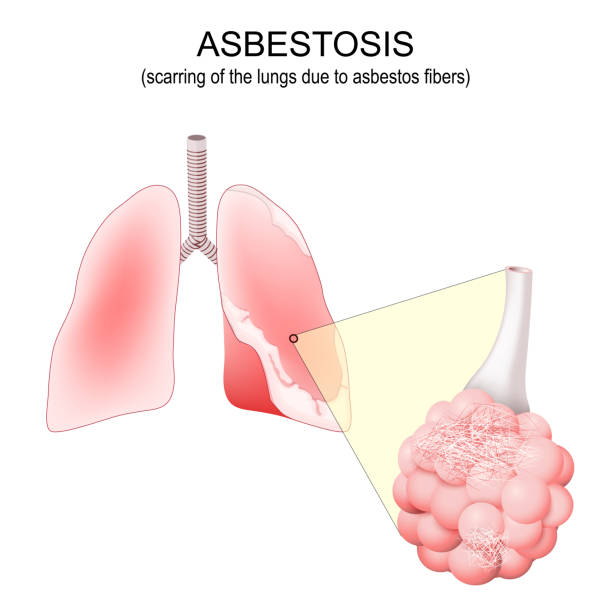Asbestosis, a chronic lung disease induced by inhaling asbestos fibers, has long been a concern for individuals exposed to these hazardous materials, particularly in occupational settings.
This irreversible disease affects the lungs’ tissue, leading to scarring that impairs breathing and overall lung function and can lead to other asbestos-related diseases.
Can Your Lungs Recover From Asbestos?

Lungs cannot fully recover from the damage caused once asbestosis, a form of pulmonary fibrosis, has developed. Asbestosis results from the inhalation of asbestos fibers that irritate and scar lung tissues over time, leading to fibrosis, which is the thickening and scarring of connective tissue.
This scarring of the lung tissue is irreversible and impairs its ability to expand and contract normally, significantly affecting oxygen exchange.
The body’s inability to break down or expel these asbestos particles means that the process can continue even after asbestos exposure has ceased, potentially leading to a progressive worsening of lung function.
While the progression of the disease can vary greatly among individuals, with some experiencing a slow advancement and others a more rapid decline, there is no current treatment available that can reverse the scar tissue.
What To Expect In Asbestos Recovery

Recovery, in this context, refers to stabilizing the progression and alleviating asbestosis symptoms as much as possible.
When discussing asbestos recovery, it’s essential to clarify that while the body cannot heal the damage caused by asbestos fibers in cases of asbestosis, individuals can take steps to manage the condition and improve their quality of life.
In severe asbestosis cases, hospitalization may be necessary to assist with respiratory functions. For all lung infections, consulting your doctor about maintaining optimal health is crucial.
Pulmonary Rehabilitation and Management

Here are some of the options for managing asbestosis effectively:
- Regular Health Check-ups: Continuous lung function tests are crucial to assess the progression of asbestosis. Pulmonary function tests, chest X-rays, and CT scans are commonly used to monitor lung health.
- Symptom Management: Treatment focuses on relieving symptoms and may include inhalers to reduce shortness of breath, cough suppressants, and chest physiotherapy to help clear the lungs.
- Avoiding Further Exposure: Eliminating exposure to asbestos dust and additional lung irritants, including quitting smoking and airborne pollutants, is critical to prevent the worsening of the condition.
- Nutritional Support: A balanced diet can help relieve symptoms and improve energy levels. Some patients may require dietary adjustments to manage weight and optimize lung function.
- Humidify Your Living Space: Use a humidifier to keep indoor air moist, helping to relieve dryness and irritation in the airways.
- Minimize Dust and Allergens: Keep your living environment clean and free from dust mites, mold, and pet dander to reduce irritation and potential respiratory infections.
- Adequate Rest: Get enough sleep every night and take a rest during the day if needed.
In Summary
While there is no cure for asbestosis, adopting a comprehensive recovery plan can significantly affect an individual’s quality of life.
These measures aim to control symptoms, slow disease progression, and enable those affected to lead as active a life as possible.

